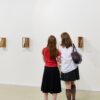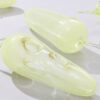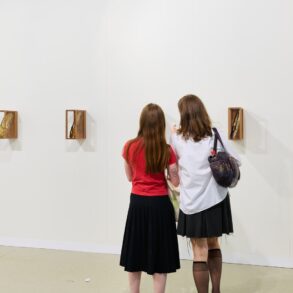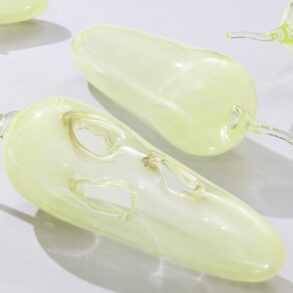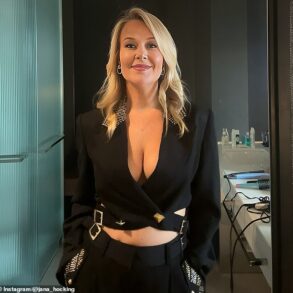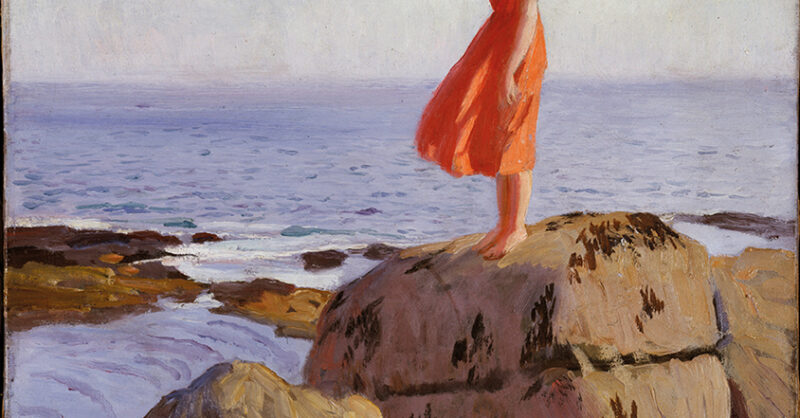
The one known painting by Mary Black (1737-1814) is an accomplished and characterful portrait of Messenger Monsey, physician to the Royal Hospital in Chelsea. It is also a symbol of the difficulties that female artists in Britain faced for more than 400 years. Made in 1764, it shows Monsey – who was, according to the diaries of Fanny Burney, “a strange gross man” – in his finest pink satin suit lounging meditatively in a chair, head on hand, open book on his knee: he is a philosophical sort.
Black had trained with the eminent Scottish portraitist Allan Ramsay and hoped this painting, of a well-known figure in the informal style forged by Joshua Reynolds, would set her fledgling career in motion. Monsey liked the picture but not, it seems, the price she asked. The irascible medic felt the opportunity to paint him was payment enough and cavilled at the £25 she asked (half the price charged by more renowned portraitists). She offered to drop the fee further but he responded in a letter that he was “sorry to find Miss Black is grown so saucy, as it will only embarrass, or stop the progress of her reputation and improvement”. In later correspondence he referred to her as a “slut”.
The unpleasantness of the episode seems to have sent Black into retreat and she turned from oils to pastels, which were then seen as a more appropriate medium for women artists. She did make a career, but not the one she had aspired to, becoming an art teacher for a wealthy clientele.
Black is one of the more than 100 female artists featured in Tate Britain’s revelatory exhibition, “Now You See Us: Women Artists in Britain 1520-1920”, and while her story may be more unedifying than most, few of her peers had it easy. Only a handful of the painters shown in this exemplary survey of women who sought to earn their living by the brush are well known; and of the pre-Victorian artists perhaps just Artemisia Gentileschi and Angelica Kauffman – both foreign-born but working in Britain for several years – have much of a public reputation.
However, many others – from Mary Moser and Maria Cosway to Mary Beale and Katherine Read – were familiar names in their own time and have subsequently slipped from notice. Moser, for example, was one of the two female founding members of the Royal Academy (RA); Cosway was a regular exhibitor at the RA and was held in high esteem on the continent; Beale accumulated aristocratic patrons in the late 17th century and was much admired by Sir Peter Lely; Read’s 1762 portrait of Lady Glenorchy was painted as the pair of Thomas Gainsborough’s depiction of Lord Glenorchy. These were painters who gained renown by merit, in spite of the obstacles that faced their gender.
This trajectory of acclaim and obscurity dates back at least to the early 16th century. Among the earliest-known women painters were Susanna Horenbout and Levina Teerlinc, both from families of Flemish illuminators, who became attached to the courts of Henry VIII’s wives and daughters. Although no existing works can be attributed to them with certainty, Dürer bought a picture by Horenbout while Teerlinc made gifts of her work to Elizabeth I.
The fact that these women came from families of artists is another theme in the exhibition. Art academies were closed to women for centuries and drawing from life models was unthinkable for them until the late 19th century, so the only way many painters could gain a proper training was through fathers, brothers and husbands. Frances Reynolds, the sister of Joshua, was one such artist (although her copies of his paintings, he said, “made others laugh and me cry”), as were Rebecca Solomon, the first professional Jewish female artist and sister of Simeon Solomon, and Laura Alma-Tadema, wife of the RA darling Lawrence.
If these women showed that they were skilled enough to compete with men, unsurprisingly, in the context, few actually eclipsed them. Henrietta Rae’s Psyche Before the Throne of Venus (1894), for example, is a highly proficient piece of Lord Leighton pastiche but determinedly sits in the particularly Victorian genre of “dreams of fair women”. On the other hand, Elizabeth Butler’s The Roll Call, showing an exhausted battalion of Grenadier Guards in the aftermath of a Crimean War battle, was the sensation of the 1874 RA summer exhibition. Its patriotism and pathos attracted such crowds that the police were called to hold them back and Queen Victoria demanded it be brought to her for a private viewing. The copyright for engravings was bought for the huge sum of £1,200.
Butler was also unusual in that she triumphed in history painting, traditionally considered the highest genre of art and one that was hitherto specifically male. Angelica Kauffman had prepared the ground in the late 18th century but her pictures tended to show scenes from classical antiquity with a woman at their heart. When artists such as Anna Lea Merritt (painter of Love Locked Out [1890], prints of which graced innumerable Victorian sitting rooms), Annie Swynnerton and Henrietta Rae painted the female nude there was praise but hostility too. One male Royal Academician posed as “A British matron” when writing to the Times in 1885 to decry such women for assisting “in the degradation of their sex”. Something similar was at play in the 1910s, when Laura Knight found herself in bad odour with the locals of Lamorna in Cornwall for her habit of painting nude models on the cliffs.
The curators sensibly show a selection of the more approved female disciplines (such as watercolours, pastels and embroidery) and subjects (flower paintings especially), but they add sculpture too. Carving, a dirty and manual business, was seen as intrinsically unfeminine. Nevertheless, artists such as Mary Thornycroft (daughter of one sculptor and wife to another) and Edmonia Lewis, an artist of black and Native American descent who overcame physical assaults and vicious prejudice in pursuit of her art, demonstrated that even if grand public commissions did not come their way they could more than hold their own with a chisel. While Julia Margaret Cameron, with a camera, comfortably outstripped most male photographers.
This is not, however, an exhibition about gender competition or pluck in the face of male oppression. The Tate has a shaky recent record when it comes to letting artists and artworks speak for themselves, often preferring to hector the viewer on issues of gender, race and class. Here though the curators, with diligent scholarship, have simply disinterred an intriguing array of talented female artists. There are no claims that they created masterpieces – the quality throughout is variable – nor that this is specifically “female art”, rather that these women are deserving of a better hand than the one history dealt them.
Now You See Us: Women Artists in Britain 1520-1920
Tate Britain, London SE1, until 13 October
[See also: The birth of the Blue Rider group]
This post was originally published on this site be sure to check out more of their content

